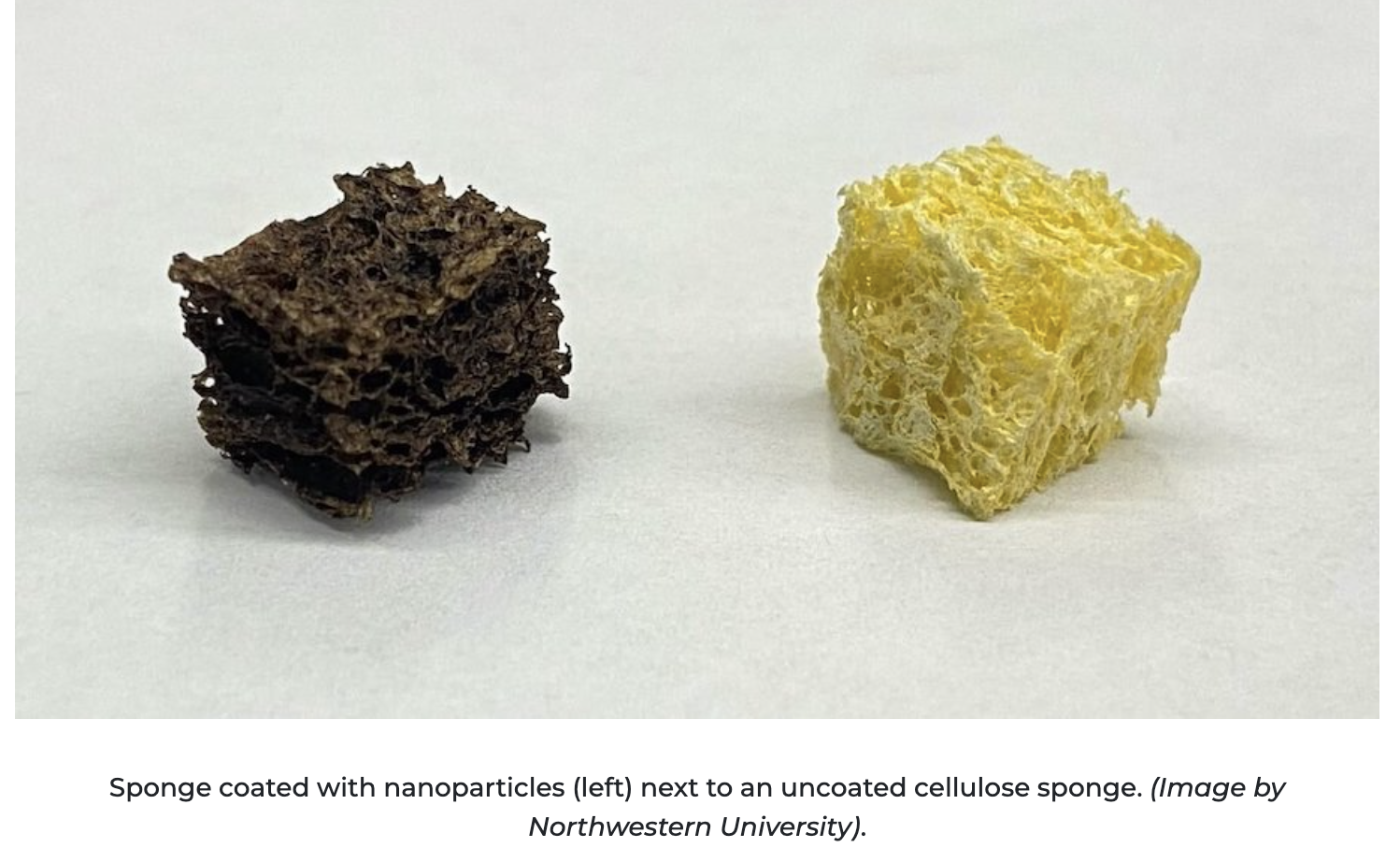New sponge can remove toxic metals, recover critical minerals from contaminated water
Originally posted on Mining.com
Northwestern University engineers have developed a new sponge that can remove metals—including toxic heavy metals like lead and critical metals like cobalt—from contaminated water, leaving safe, drinkable water behind.
In a paper published in the journal ACS ES&T Water, the researchers explain that they tested their new sponge on a highly polluted sample of tap water, containing more than 1 part per million of lead. With one use, the sponge filtered lead to below detectable levels.
After using the sponge, they were also able to successfully recover metals and reuse the sponge for multiple cycles.
“The presence of heavy metals in the water supply is an enormous public health challenge for the entire globe,” Vinayak Dravid, senior author of the study, said in a media statement. “It is a gigaton problem that requires solutions that can be deployed easily, effectively and inexpensively. That’s where our sponge comes in. It can remove the pollution and then be used again and again.”
Dravid noted that this project builds on his previous work developing highly porous sponges to clean up oil spills. The nanoparticle-coated sponge is now being commercialized by Northwestern spinoff MFNS Tech.
But in the researcher’s view, this wasn’t enough.
“When there is an oil spill, you can remove the oil but there also are toxic heavy metals—like mercury, cadmium, sulphur and lead—in those spills. So, even when you remove the oil, some of the other toxins might remain,” he pointed out.
Manganese to the rescue
To tackle this issue, Dravid’s team, again, turned to sponges coated with an ultrathin layer of nanoparticles, in this case, manganese-doped goethite. Not only are manganese-doped goethite nanoparticles inexpensive to make, easily available and nontoxic to humans, but they also have the properties necessary to selectively remediate heavy metals.
“You want a material with a high surface area, so there’s more room for the lead ions to stick to it,” Benjamin Shindel, first author of the paper, said. “These nanoparticles have high-surface areas and abundant reactive surface sites for adsorption and are stable, so they can be reused many times.”
The team synthesized slurries of manganese-doped goethite nanoparticles, as well as several other compositions of nanoparticles, and coated commercially available cellulose sponges with these slurries. Then, they rinsed the coated sponges with water to wash away any loose particles. The final coatings measured just tens of nanometers in thickness.
When submerged in contaminated water, the nanoparticle-coated sponge effectively sequestered lead ions. The US Food and Drug Administration requires that bottled drinking water is below 5 parts per billion of lead. In filtration trials, the sponge lowered the amount of lead to approximately 2 parts per billion, making it safe to drink.
From there, the team rinsed the sponge with mildly acidified water. The solution caused the sponge to release the lead ions and be ready for another use. Although the sponge’s performance declined after the first use, it still recovered more than 90% of the ions during subsequent use cycles.
This ability to gather and then recover heavy metals is particularly valuable for removing rare, critical metals, such as cobalt, from water sources.
“For renewable energy technologies, like batteries and fuel cells, there is a need for metal recovery,” Dravid said. “Otherwise, there is not enough cobalt in the world for the growing number of batteries. We must find ways to recover metals from very dilute solutions. Otherwise, it becomes poisonous and toxic, just sitting there in the water. We might as well make something valuable with it.”

